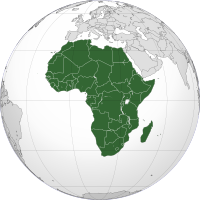
Photo from wikipedia
Loss of sunlight-reflecting snow spurs evaporation and ebbs river flow As the beating heart of the American Southwest, the Colorado River (CR) serves ∼40 million people from Denver to Los… Click to show full abstract
Loss of sunlight-reflecting snow spurs evaporation and ebbs river flow As the beating heart of the American Southwest, the Colorado River (CR) serves ∼40 million people from Denver to Los Angeles and supports 16 million jobs in a $1.4 trillion regional economy (1). Most of the river's streamflow originates as snowpack in the mountains of the Upper Colorado River Basin (UCRB). Flow is threatened by increasing demands from a growing population, extended drought, and climate change. A 2018 workshop (2) convened experts in climate and hydrologic modeling, observational analysis, and paleoclimatology to address the causes of the observed declines in streamflow. All agreed that rising local temperatures were associated with drying of the basin, but varied methods yielded large differences in the magnitude of this effect. Workshop participants urged the scientific community to identify sources of these differences by deciphering the contributions of various processes to hydroclimatic changes. On page 1252 of this issue, Milly and Dunne address this challenge (3).
Journal Title: Science
Year Published: 2020
Link to full text (if available)
Share on Social Media: Sign Up to like & get
recommendations!